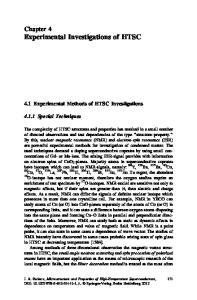Mode-I Fracture Investigations of Pressure Vessel Steels: Experimental and Simulation Study
- PDF / 1,824,544 Bytes
- 9 Pages / 593.972 x 792 pts Page_size
- 100 Downloads / 414 Views
JMEPEG https://doi.org/10.1007/s11665-020-05209-7
Mode-I Fracture Investigations of Pressure Vessel Steels: Experimental and Simulation Study Swadesh Dixit, Vikas Chaudhari
, and D.M. Kulkarni
Submitted: 3 February 2020 / Revised: 6 September 2020 / Accepted: 6 October 2020 The current paper reports the development of experimental–simulation coupled approach to investigate fracture behavior of SA 387 and SA 516 pressure vessel steels. Mechanical and fracture properties are derived from tensile and fracture tests, respectively. Cohesive model is implemented for fracture studies of pressure vessel steels within XFEM framework. To simulate crack, gradual degradation of the elements is considered and suitable criterion is proposed to select cohesive parameters (i.e., cohesive energy, cohesive stiffness and cohesive strength). Simulations are performed to study effect of traction separation laws (exponential, partly constant and constant). The simulation results are validated with experimental data. Among the chosen traction separation laws, partly constant and constant traction separation laws are found suitable for SA 387 and SA 516 pressure vessel steel, respectively. It has also been confirmed from the fracture surface morphology study that SA 387 steel has less fracture resistance compared to SA 516 steel. Keywords
cohesive modeling, extended finite element method, fractography, fracture analysis, mechanical properties, pressure vessel steels
1. Introduction From centuries, structural and design engineers are facing trouble with catastrophic failure of the structures. Efforts are being made to investigate and prevent structural failures. One such structure of interest is the pressure vessel, which has numerous applications in process industries, petrochemical industries, nuclear power plants and so on. From past studies of pressure vessel failure, most of them are failed due to fracture (Ref 1, 2). The fracture behavior can be investigated using appropriate experimental methods, but for every parameter change, it is needed to perform separate experimentation. Simulation allows the structural and design engineers to determine the optimum parameters before development of actual system. Also, the validated fracture model can be directly implemented for full-scale model to explore alternative designs without actual physically building the systems. Therefore, simulation study is preferred as it gives low cost and reasonable solution for many fracture analysis. Finite element method (Ref 3-5) is being used to model the propagation of cracks under different loading conditions. FEM is developed for continuum domains; however, crack acts as a discontinuity in continuum
Swadesh Dixit, Vikas Chaudhari, and D.M. Kulkarni, Department of Mechanical Engineering, BITS, Goa Campus, Pilani, India. Contact e-mail: [email protected].
Journal of Materials Engineering and Performance
domain; therefore, it becomes difficult to model crack problems in FEM. To overcome this issue, fracture mechanic-based FE analysis is develo
Data Loading...











